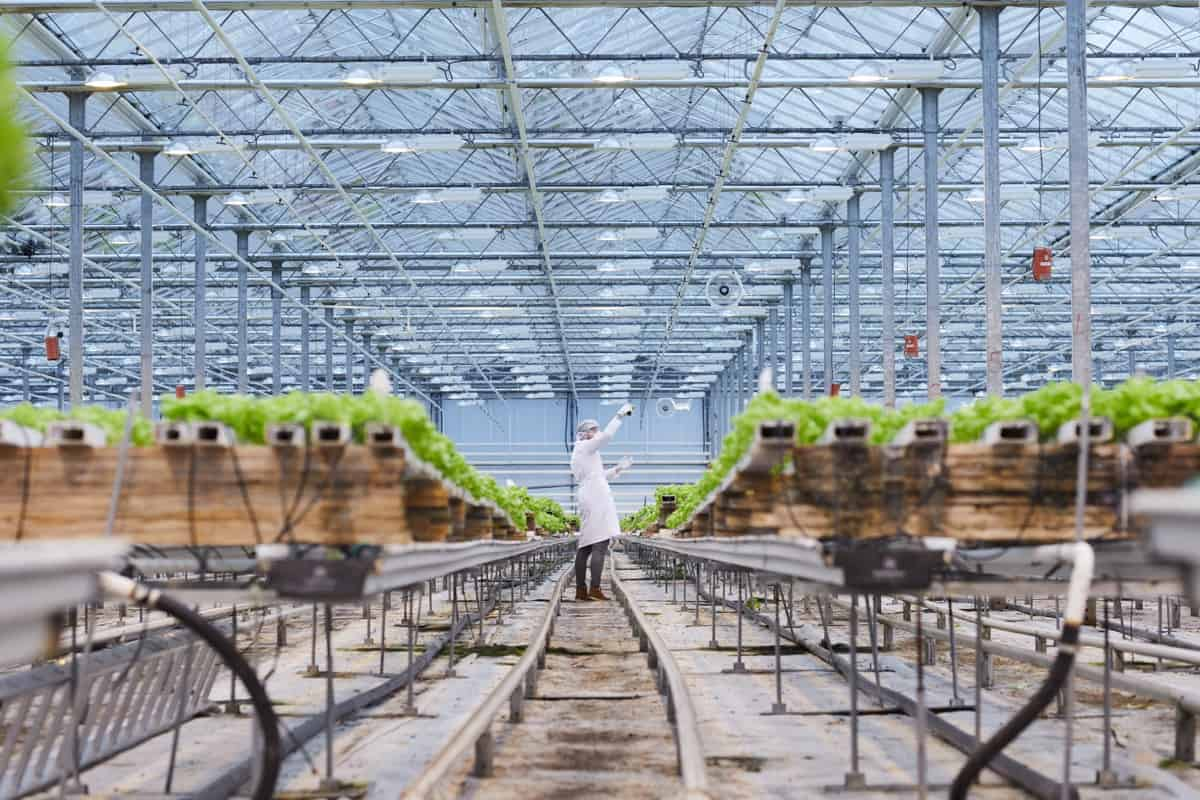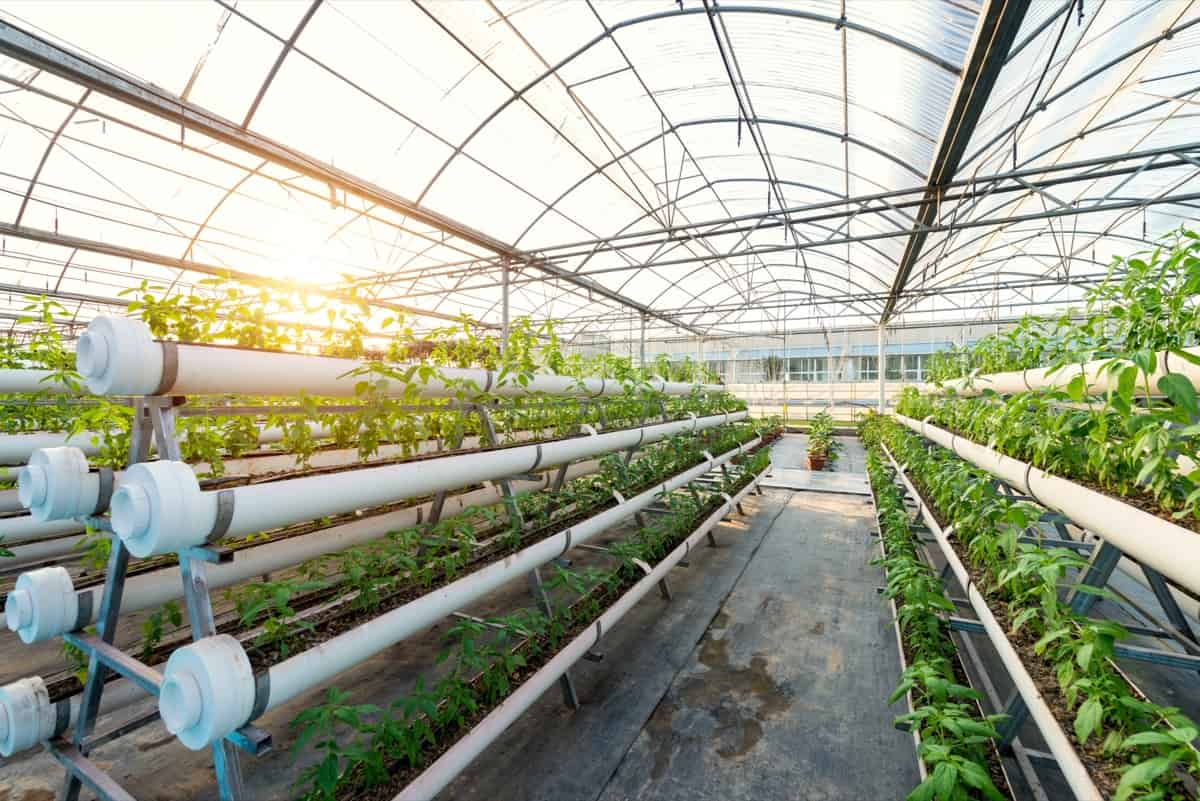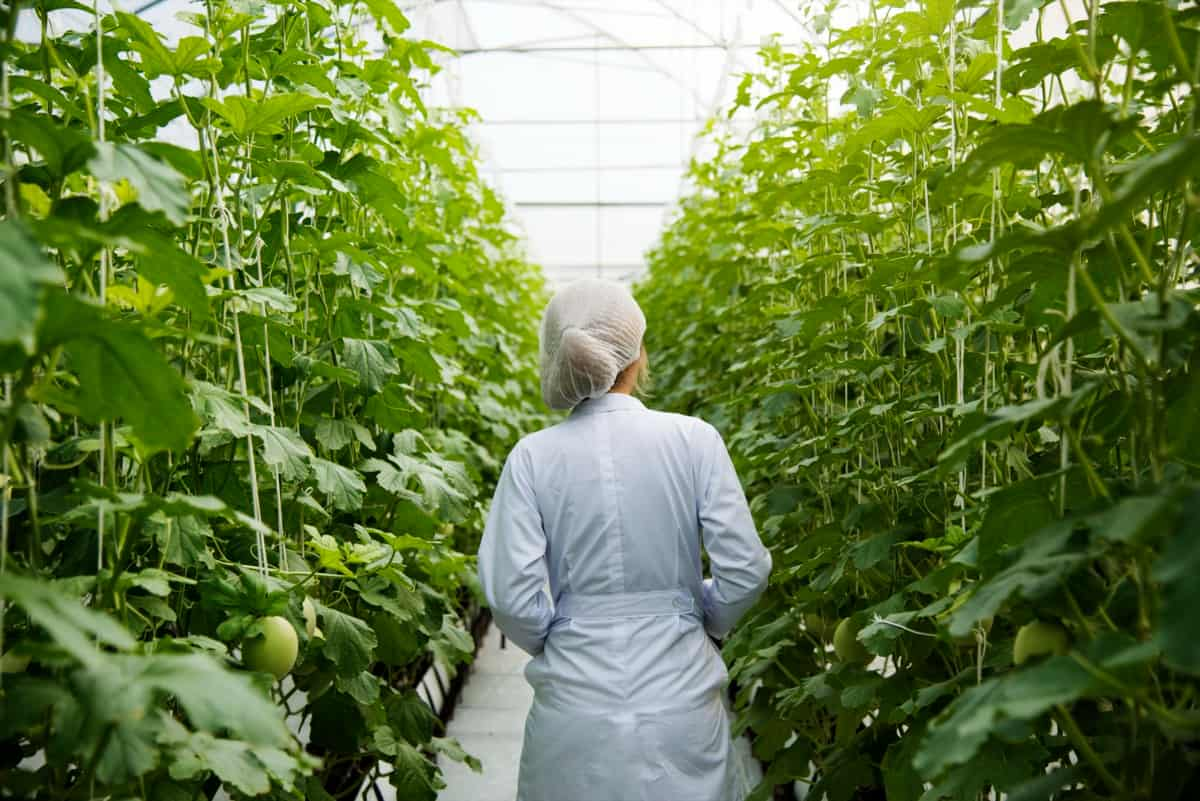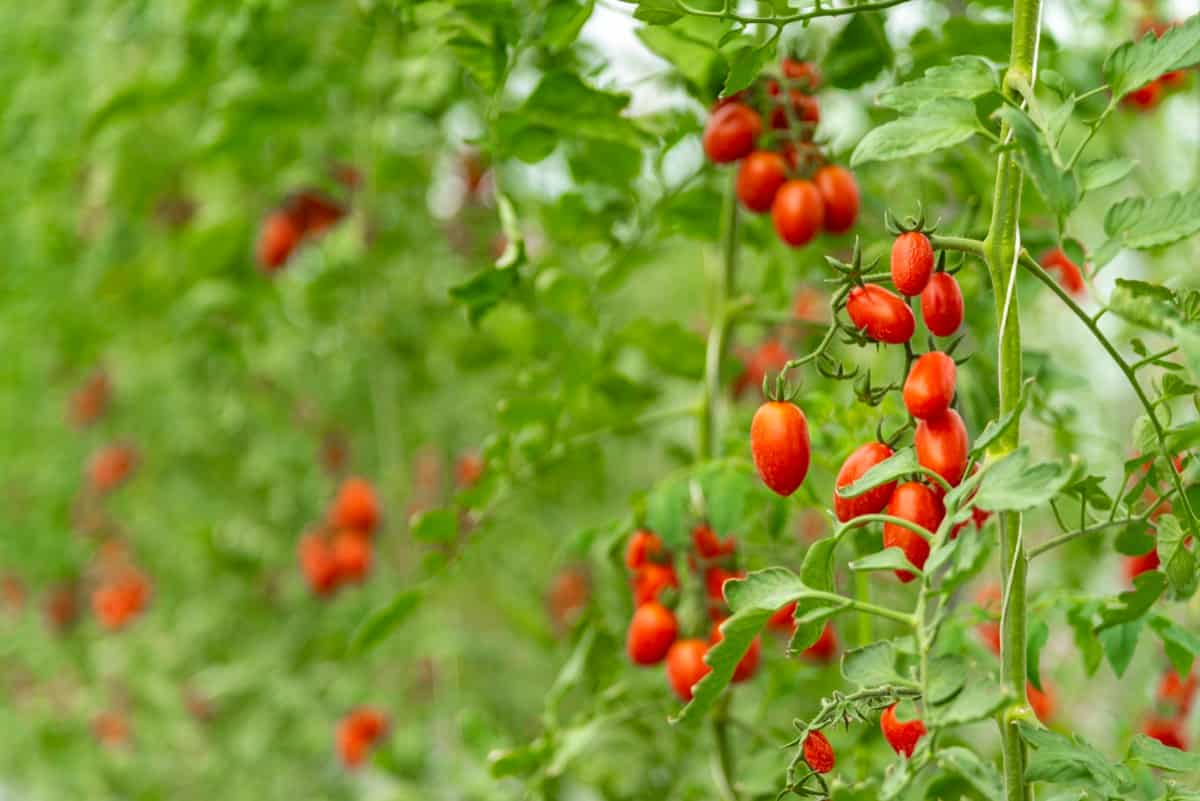Uttarakhand is a state in India that has been growing rapidly in recent years. This growth has been spurred by the demand for agricultural products, particularly fruits, and vegetables. One of the main crops grown in Uttarakhand is greenhouse farming, which allows farmers to produce in a controlled environment.

Greenhouse Farming in Uttarakhand
What is Greenhouse Farming?
Greenhouse farming is an agricultural production system that uses artificially heated environments to maintain the year-round growth of crops. Greenhouses are ideal for growing crops in Uttarakhand because they provide consistent weather conditions year-round. Greenhouse farming is becoming increasingly popular because it can provide year-round food supplies in colder climates and eliminates the need for extra land and irrigation systems.
Benefits of Greenhouse Farming in the Uttarakhand
- Greenhouse farming is sustainable and does not rely on chemicals or pesticides, which can negatively affect the environment.
- Greenhouse farming is high-yielding crops typically producing more fruit or vegetables per unit area than those grown outdoors.
- Greenhouse farming is labor-intensive, and few tools are necessary for greenhouse gardening, making it easy for smallholders to start.
- Greenhouses can be located near markets, making it easier for farmers to sell their products.
- Greenhouses can be used in dry and wet climate areas – as long as they have access to irrigation facilities.
- Greenhouse farming is more productive than traditional agriculture because it uses less water and land.
- Greenhouse farming is environmentally friendly because it produces fewer greenhouse gases.
- Greenhouse farming is safer because it eliminates the risk of pests and diseases.
- Greenhouse farming is easier to operate than traditional agriculture because there is no need for field irrigation or drainage systems.
In case you missed it: How to Start Poultry Farming in Uttarakhand: Business Plan, Setup Cost, Profit, and Requirements

Greenhouse Vegetable Production in Uttarakhand
In Uttarakhand, greenhouse vegetable production is becoming increasingly popular due to the state’s hot and humid climate. The main crops grown in greenhouses are tomatoes, cucumbers, eggplants, and peppers. Uttarakhand is one of the most fertile and green states in India. It has a great potential to grow vegetables in greenhouses using modern farming methods. The state has a temperate climate with adequate sunlight and rainfall.
Is Greenhouse Farming Profitable in Uttarakhand
- Greenhouse farming in Uttarakhand is becoming popular due to favorable climatic conditions and ample sunlight. The state has a long, warm winter followed by a short but hot summer season. There is no rainy season, making it one of the ideal states for greenhouse farming.
- Greenhouse farms can be profitable if the greenhouse is built correctly and the crops are chosen carefully. Greenhouse farming is an environmentally friendly way of growing crops that employs natural sunlight and ventilation. Crops grown in greenhouses can be harvested anytime, even during winter.
- Greenhouse farming is also ideal for crops that require high humidity levels, such as tomatoes. This type of farming is becoming more popular in India due to its environmental benefits and the low cost of greenhouse construction.
How Does Greenhouse Farming Work?
- Greenhouse farming is a type of agriculture in which crops are grown indoors in structures known as greenhouses. Greenhouse farming is becoming increasingly popular in India because it is a more efficient way to grow crops and reduces the need for water and labor.
- In a greenhouse farm, seeds are planted in specially designed pots or flats inside the greenhouse, and then the plants are covered with plastic sheeting to protect them from the weather. The temperature inside the greenhouse is controlled by heating and cooling systems, and ventilation systems regulate the humidity.
- The crops grown in a greenhouse can be any plant, including fruits, vegetables, flowers, herbs, and cereals. In India, most greenhouse crops are used for religious purposes because they are difficult to grow outside of a climate that is hospitable to them.
- Greenhouse farming in Uttarakhand is a new and rapidly growing sector of agriculture that uses greenhouse technology to grow crops. This farming involves the construction of an artificial structure, called a greenhouse, in which plants are grown. The greenhouse allows the farmer to control the structure’s temperature and humidity levels, allowing the plant to grow more efficiently.
In case you missed it: How to Start Dairy Farming in Uttarakhand: Business Plan, Breeds, Setup Cost, Profit, Requirements, and Management

Crops are Grown Under Greenhouses in Uttarakhand
Several crops can be grown in greenhouses, including Tomatoes, Cucumbers, Potatoes, Peppers, Eggplant, Cauliflower, Peas, Beans, Strawberries, and Lettuce. To start a greenhouse in Uttarakhand, you must decide what crop you want to grow and figure out the cost of an acre greenhouse. You may also be eligible for government subsidies or loans to help cover the costs.
Can You Grow in A Greenhouse Year-Round in Uttarakhand?
Greenhouse farming in Uttarakhand can be done year-round, provided the conditions are met. The state generally has a temperate climate with adequate sunlight and rainfall. You may be able to receive subsidies from the government for purchasing or constructing a greenhouse, and you may also qualify for loans from banks or other financial institutions. Greenhouse farming is one of the most sustainable methods, using less land and water than traditional farming methods. In Uttarakhand, greenhouse farming is growing in popularity as an alternative to traditional farming practices.
What Are the Different Types of Greenhouse Farms in Uttarakhand?
Cold Frame Greenhouses
These are the simplest greenhouses made from wooden frames covered with plastic or glass. They can be used to grow various vegetables, flowers, and fruit. Cold frames typically have a width of 8-10 feet and a height of 4-6 feet. They can be installed on a balcony or in an outdoor garden.
Insulated Frame Greenhouses
Insulated frames are designed specifically for growing plants in temperate climates. They feature double or triple walls made from thermal insulation that helps keep the interior temperature consistent no matter what the outside weather conditions are like. This type of greenhouse is perfect for growing fruits and vegetables in Uttarakhand because it can handle temperatures below freezing and up to 50°C.
Open-field greenhouse farming
It is the most common type of greenhouse farming in Uttarakhand. Open-field greenhouses are typically large and can accommodate a variety of crops. They are often used to produce fruits, vegetables, flowers, and herbs. Open-field greenhouses cost about Rs 2 lakh per acre to build, and they require a subsidy of about Rs 1 lakh per acre to operate.
In case you missed it: Top Agricultural Colleges in Uttarakhand: Government and Private

Polytunnel Greenhouse Farming
is a less common type of greenhouse farming in Uttarakhand. Polytunnels are low-profile structures that are typically built underground. They allow farmers to grow plants under controlled conditions.
Cost to Build a Greenhouse in Uttarakhand
A 1-acre greenhouse in Uttarakhand can cost anywhere between Rs.5 lakh and Rs.10 lakhs, depending on the specifications of the greenhouse. The amount also depends on whether the greenhouse is built using traditional or green building materials. In either case, a government subsidy of around 30% is usually available to help offset the construction cost.
Steps to Create Greenhouse Business Plan in Uttarakhand
1. Research the climate in your area – Before starting any greenhouse farming, research the local climate and soil conditions. This will help you identify the crops that can be grown in your area.
2. Choose a location for your greenhouse – Once you have identified the crops that can be grown, you need to find a suitable location for your greenhouse. Ensure that the site has adequate sunlight and ventilation and is free from pests and diseases.
3. Get an agricultural land lease – Once you have found a suitable location, you will need to get an agricultural land lease from the government. This will allow you to grow crops on the land, subject to certain conditions such as minimum acreage requirements and restrictions on the use of water resources.
4. Start building your greenhouse – Once you have secured an agricultural land lease, it’s time to start building your greenhouse. You will need roofing materials, glass windows, doors, frames, insulation, and more.
5. Plant your crops – Now it’s time to plant them. Begin by planting seeds into prepared pots or containers and then transferring them into the greenhouse once it is ready. Fertilize the plants regularly with water or manure when necessary.
Loans and Subsidies for Greenhouse Farming in Uttarakhand
- In Uttarakhand, several government-sponsored schemes can be used to subsidize greenhouse farming. These include the Rabi Krishi Sinchai Yojana (RKSI), National Horticulture Mission (NHM), State Horticulture Mission (SHM), Pradhan Mantri Fasal Bima Yojana (PMFBY)
- Greenhouse farming requires a lot of land, so it is important to find funding that covers at least part of the cost. Subsidies can help cover the upfront costs of getting started, while loans can help cover ongoing expenses like maintenance and growth expenses.
- Several government programs help offset the cost of constructing or purchasing a greenhouse. These programs include subsidies and loans from various financial institutions. To qualify for these programs, applicants must meet certain requirements, such as having good credit backgrounds and demonstrating a need for the crop grown in the greenhouse.
- The RKSI scheme provides financial assistance to eligible farmers to install agricultural infrastructure, including greenhouses. The amount of assistance is based on the size and type of greenhouse installed. To be eligible for RKSI support, farmers must also meet minimum production targets set by the state government.
- The NHM scheme provides funding for research into new horticultural technologies eligible, and cultivators can receive up to Rs 50,000 per hectare per year under this scheme. SHM supports soil improvement projects, including those aimed at promoting greenhouse cultivation.
- The availability of loans for greenhouse farmers in Uttarakhand is limited but available. The loan interest rates vary depending on the lender but tend to be lower than traditional lending options. Loans can generally purchase land or equipment for the greenhouse farm. Subsidies are also available for greenhouse farmers in Uttarakhand. These subsidies can help offset the cost of land or equipment purchased with a loan.
In case you missed it: How to Buy Agricultural Land in Uttarakhand

Key Rules to Start Greenhouse Farming in Uttarakhand
1. The first step is identifying which crops can be grown in a greenhouse. Greenhouses are best suited for plants that require a lot of heat and light, such as tomatoes, peppers, and cucumbers. Some other crops that can be grown in greenhouses include strawberries, grapefruit, and avocados.
2. You will need to research the cost of building an acre greenhouse. There are also many subsidies and loans available to help with the costs. Once you have determined the total cost of constructing or purchasing an acre-greenhouse, you will need to estimate how much product you will be able to sell each year.
3. You will also need to figure out how much capital you will need to invest in starting your greenhouse business. You will need to create a business plan documenting your goals and plans for your greenhouse business.
4. You will likely need to apply for government subsidies or loans. These programs can provide you with financial assistance to help reduce the cost of owning a greenhouse. Alternatively, you could take a loan from a bank or financial institution. Both options have their own set of eligibility requirements. Once you have determined if you qualify for a subsidy or loan, it is time to apply. Your application may take some time to approve, so be patient.
In case you missed it: Organic Farming In Uttarakhand, How To Start

Challenges of Greenhouse Farming in Uttarakhand
There are several challenges that greenhouse farmers face in Uttarakhand. The first challenge is that there are few natural resources available for cultivation. This means that farmers have to find other ways to improve crop yields. The next challenge faced by greenhouse farmers in Uttarakhand is climate change. The region experiences high humidity and temperature swings, which can be difficult for plants to withstand.
Getting enough water is also another challenge faced by greenhouse farmers. The region experiences heavy rains throughout the year, which can turn rivers into raging torrents quickly. As a result, irrigation systems are essential for keeping crops healthy and hydrated. Water shortages can be particularly problematic for greenhouses since they depend on a large amount of water to keep the plants warm and humid inside the structures.
Despite these challenges, greenhouse farming is becoming increasingly popular in Uttarakhand because it offers many benefits over traditional agriculture methods. For example, greenhouse farming allows farmers to grow crops year-round, which improves food security and reduces dependence on rainfall patterns. Additionally, greenhouse farming often results in higher yields than traditional methods because plants can reach their full potential due to better light and temperature control.
In case you missed it: How to Start Greenhouse Farming in Odisha: Crops, 1 Acre Greenhouse Cost, Subsidy, and Loans

Conclusion
Greenhouse farming is a high-yielding, sustainable system using controlled temperatures and humidity levels to cultivate plants in enclosed spaces. Crops can be grown in greenhouse environments with different climates, from tropical to temperate zones. A greenhouse’s ceiling and walls protect from weather extremes while allowing sunlight, air, and water to reach the plants.
The most common crops grown in greenhouses include fruits, vegetables, flowers, nursery plants, and herbs. if you plan to start a Greenhouse cultivation/production in the following districts of Uttarakhand, this blog post would be helpful.
| Almora | Pauri Garhwal |
| Bageshwar | Pithoragarh |
| Chamoli | Rudraprayag |
| Champawat | Tehri Garhwal |
| Dehradun | Udham Singh Nagar |
| Haridwar | Uttarkashi |
| Nainital |
- Types of Pesticides Used in Agriculture: A Beginner’s Guide
- Economical Aquaculture: A Guide to Low-Budget Fish Farming
- 15 Common Planting Errors That Can Doom Your Fruit Trees
- How to Make Houseplants Bushy: Effective Tips and Ideas
- Innovative Strategies for Boosting Coconut Pollination and Yield
- Pollination Strategies for Maximum Pumpkin Yield
- The Complete Guide to Chicken Fattening: Strategies for Maximum Growth
- Natural Solutions for Tulip Problems: 100% Effective Remedies for Leaf and Bulb-Related Issues
- Revolutionizing Citrus Preservation: Towards a Healthier, Greener Future
- Natural Solutions for Peony Leaf and Flower Problems: 100% Effective Remedies
- Maximizing Profits with Avocado Contract Farming in India: A Comprehensive Guide
- Natural Solutions for Hydrangea Problems: 100% Effective Remedies for Leaf and Flowers
- The Ultimate Guide to Choosing the Perfect Foliage Friend: Bringing Life Indoors
- From Sunlight to Sustainability: 15 Ways to Use Solar Technology in Agriculture
- The Ultimate Guide to Dong Tao Chicken: Exploring from History to Raising
- The Eco-Friendly Makeover: How to Convert Your Unused Swimming Pool into a Fish Pond
- Mastering the Art of Delaware Chicken Farming: Essentials for Healthy Backyard Flocks
- 20 Best Homemade Fertilizers for Money Plant: DIY Recipes and Application Methods
- How to Craft a Comprehensive Free-Range Chicken Farming Business Plan
- Brighten Your Flock: Raising Easter Egger Chickens for Beauty and Bounty
- How to Optimize Your Poultry Egg Farm Business Plan with These Strategies
- Subsidy for Spirulina Cultivation: How Indian Government Schemes Encouraging Spirulina Farmers
- Ultimate Guide to Raising Dominique Chickens: Breeding, Feeding, Egg-Production, and Care
- Mastering the Art of Raising Jersey Giant Chickens: Care, Feeding, and More
- Ultimate Guide to Raising Legbar Chickens: Breeding, Farming Practices, Diet, Egg-Production
- How to Raise Welsummer Chickens: A Comprehensive Guide for Beginners
- How to Protect Indoor Plants in Winter: A Comprehensive Guide
- Ultimate Guide to Grow Bag Gardening: Tips, Tricks, and Planting Ideas for Urban Gardeners
- Guide to Lotus Cultivation: How to Propagate, Plant, Grow, Care, Cost, and Profit
- Agriculture Drone Subsidy Scheme: Government Kisan Subsidy, License, and How to Apply Online
- Ultimate Guide to Raising Araucana Chickens: Breed Profile, Farming Economics, Diet, and Care
- Bringing Hydroponics to Classroom: Importance, Benefits of Learning for School Students
- Ultimate Guide to Raising Polish Chickens: Breed Profile, Farming Economics, Diet, and Care
- Ultimate Guide to Raising Australorp Chickens: Profile, Farming Economics, Egg Production, Diet, and Care
- Silkie Chicken Farming: Raising Practices, Varieties, Egg Production, Diet, and Care
- Sussex Chicken Farming: Raising Practices, Varieties, Egg Production, Diet and Care